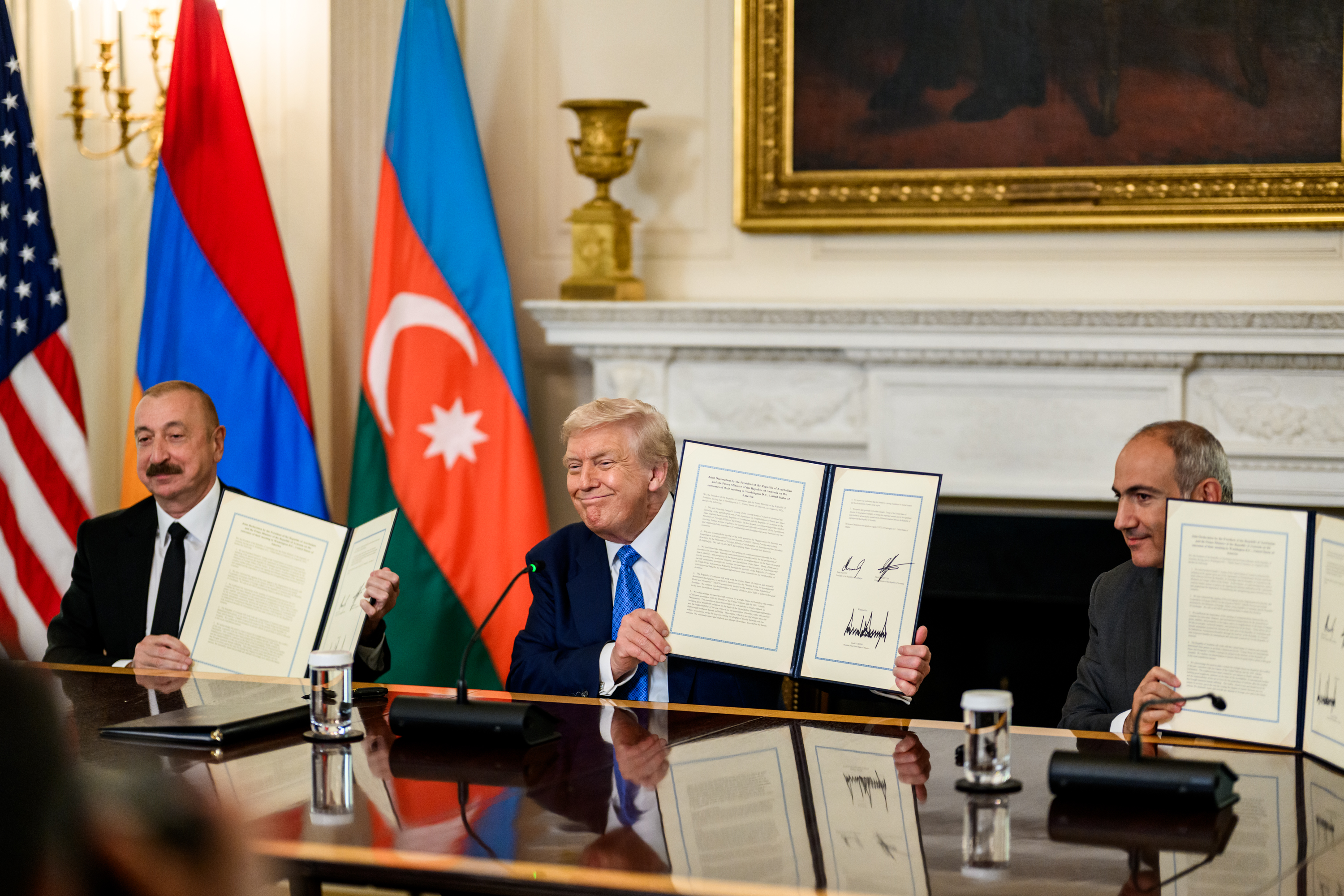Historic South Caucasus Peace Accord Ends Decades of Conflict and Opens New Pathways

Historic Peace Accord Signed to End Decades of Conflict in the South Caucasus
In a landmark development for a region long marked by strife, a peace accord was officially signed bringing a hopeful chapter to two neighboring nations with a tumultuous past. The ceremony took place with the distinguished presence of an influential international figure alongside the two key national leaders. This event marks a significant turning point after decades of hostilities, violence, and loss of life between these countries.
The agreement emerges as a product of extensive diplomatic effort, concluding years of failed negotiations. It provides a framework not only for cessation of armed conflict but also for the establishment of diplomatic relations, economic cooperation, and the respect of sovereignty and territorial integrity. The signing ceremony underscored mutual respect and an expressed commitment by the leaders involved to foster peace and collaboration moving forward.
This diplomatic breakthrough was acknowledged by the global community as a beacon of hope in the region. The role of the international host was praised for facilitating an environment conducive to dialogue and reconciliation. Their expressed respect and friendship toward both leaders accentuated the historic nature of this moment, highlighting a unified vision for a peaceful coexistence and shared prosperity.
Origins and Milestones Toward Peace
The conflict that has spanned multiple decades resulted in a profound humanitarian and economic toll. It has been characterized by intermittent clashes, with occasional international mediation efforts failing to produce a lasting resolution. The recent agreement represents the culmination of persistent diplomatic engagement and the willingness of the parties to transcend historical grievances.
Key milestones in this process included several rounds of negotiations, confidence-building measures, and preliminary accords aimed at reducing hostilities. The decision to enter into a comprehensive peace treaty was a calculated outcome that depended heavily on sustained dialogue and the strategic involvement of external actors supporting a peaceful resolution.
The treaty's signing also introduced a special transit corridor, reflecting forward-looking economic and infrastructural cooperation. This corridor is designed to facilitate trade, travel, and communication while respecting the sovereignty of the nations involved. Such mechanisms are anticipated to enhance regional connectivity, provide economic benefits, and reduce external geopolitical influences.
Language of Leadership and Friendship
The atmosphere during the signing was characterized by mutual recognition of leadership excellence and personal respect. The statement of honor made by the international guest conveyed deep admiration for the leadership qualities demonstrated by both political figures. Acknowledging them as exemplary and forward-thinking, the declaration emphasized the development of genuine personal ties alongside political collaboration.
Expressions of friendship and respect among the three underscored the human element behind diplomatic undertakings. The interpersonal rapport established during the inauguration of peace serves as a foundation for sustainable cooperation beyond the formal agreements. It also symbolizes a departure from decades of animosity toward a new era of partnership.
The leaders’ commitment to peace translates into a promise for future generations, aiming to replace conflict with stability and opportunity. Such leadership embodies a transformative approach that prioritizes dialogue and mutual benefit, setting a precedent for conflict resolution worldwide.
Significance and Regional Impact
The accord holds considerable geopolitical significance beyond its immediate locale. The establishment of peaceful relations between these neighboring states is expected to reshape trade routes, enhance economic integration, and open new corridors for energy and infrastructure development. This has implications for regional cooperation and the strategic balance in an area historically influenced by larger global powers.
The inclusion of a transit segment governed respectfully under national laws is seen as a novel solution reflecting the complexity of regional sovereignty issues. It enables enhanced mobility while honoring existing state boundaries, offering a pragmatic model for resolving similar disputes elsewhere.
This development also signals a potential shift in regional dynamics by offering a platform for reduced tensions and a focus on economic prosperity. Stakeholders worldwide view this moment as a hopeful indicator of sustained peace and increased opportunity for the peoples influenced by decades of disruption.
Conclusion
This historic event represents more than just the signing of a treaty; it embodies a collective aspiration for peace, reconciliation, and progress. The convergence of committed leadership and international facilitation has delivered a transformative outcome that resonates far beyond the borders involved. As the participants move forward as allies and friends, the foundations for a stable and prosperous future have been firmly laid.
Such a milestone highlights the power of diplomacy and personal respect to overcome longstanding conflict. The legacy of this accord will likely influence regional and global peace processes for years to come, serving as a testament to what can be achieved when dialogue and leadership converge with vision and determination.
